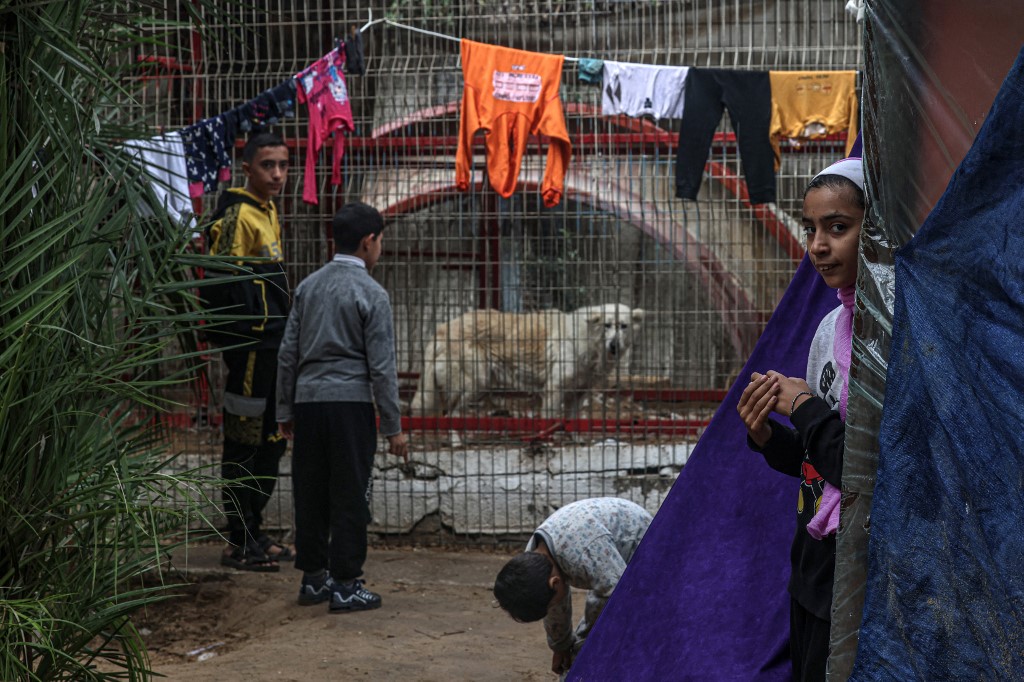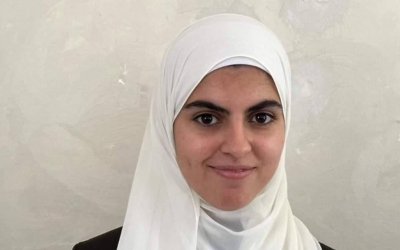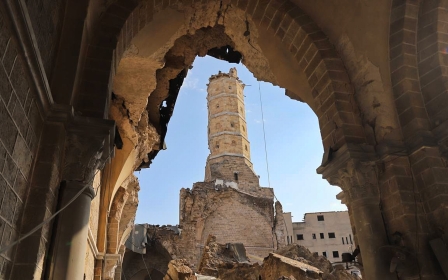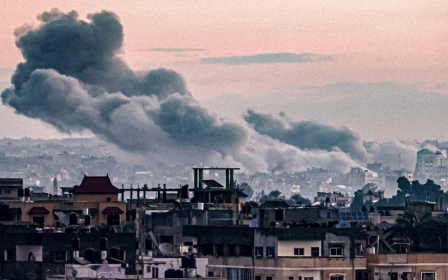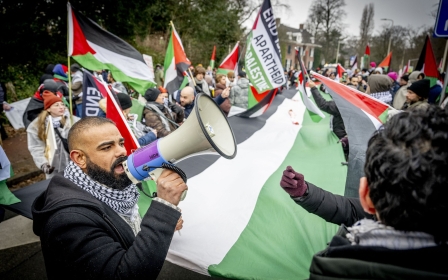100 days of war in Gaza: More than 23,000 dead and a society in ruins
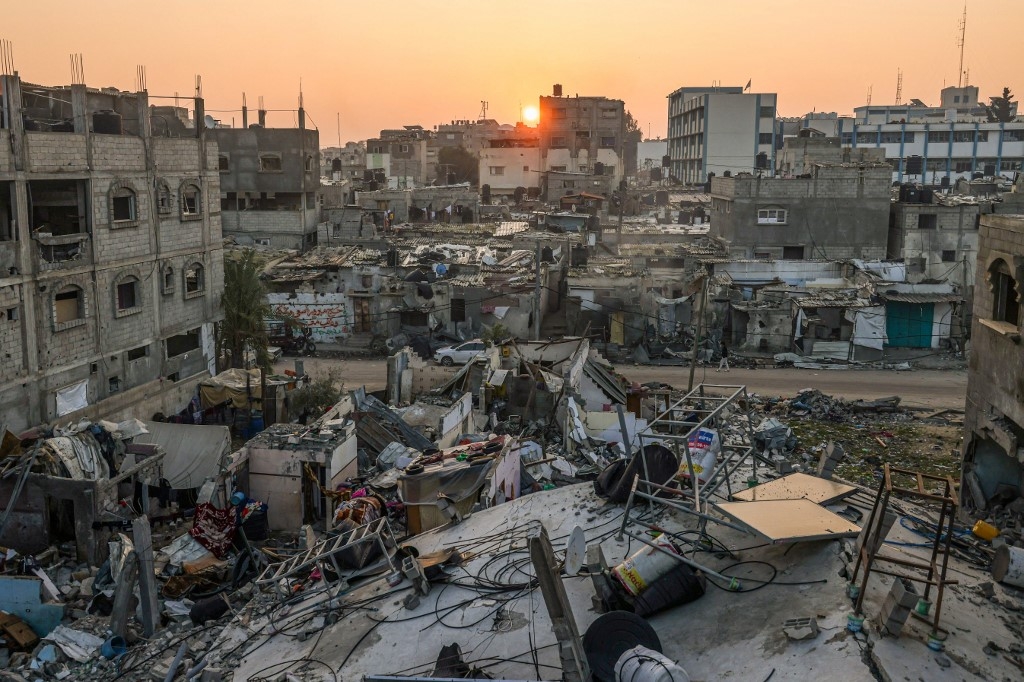
One hundred days after Israel launched its assault on Gaza, bombs are still falling on the enclave, which has already seen 4 percent of its population killed, injured or missing.
Under these conditions, it's impossible to catalogue everything that has been destroyed and damaged so far and still counting.
What we know with certainty is that the sheer magnitude of the destruction since 7 October is unprecedented when compared with any other Israeli war on Gaza.
"I don't think that anyone in Gaza could ever imagine the amount of destruction that Israel has inflicted on Palestinians," Yousef al-Jamal, a Palestinian journalist and author from Gaza who lived through those wars, told Middle East Eye. "Not in their wildest dreams.
"We've never seen such destruction, even during the Nakba," he said, referring to the expulsion of Palestinians amid the creation of Israel in 1948. "This is something we never saw before."
New MEE newsletter: Jerusalem Dispatch
Sign up to get the latest insights and analysis on Israel-Palestine, alongside Turkey Unpacked and other MEE newsletters
From schools to hospitals, universities to shopping malls, libraries to theatres, in 100 days the building blocks of a society still functioning under a 16-year siege have been wiped out.
One monitor says 70 percent of Gaza's civilian infrastructure is gone.
MEE has compiled a preliminary list of what has been destroyed and damaged:
Healthcare: Most hospitals not functioning
One UN expert has described the attacks unleashed as an "unrelenting war" on the health system in Gaza.
"The healthcare infrastructure in the Gaza Strip has been completely obliterated," Tlaleng Mofokeng, the UN special rapporteur on the right to health and a practising medical doctor, said in December.
According to the World Health Organisation, the Israeli military has attacked 94 healthcare facilities and 79 ambulances since 7 October.
More than half of Gaza's hospitals were no longer functioning as of 5 January. Thirteen remaining hospitals - nine in the south and four in the north - were partially operational, but facing shortages of basic supplies and fuel while trying to run far beyond their usual capacity.
As medical supplies, water and electricity have run out, doctors say they have been forced to work in unhygienic conditions and use everyday items in place of basic medical materials. Instead of antiseptic solution, there was washing-up liquid and vinegar.
Procedures have been carried out without anaesthetic, including some of the operations in which 1,000 children had one or both of their limbs amputated, Unicef has reported.
"The situation was medieval-like,” Ghassan Abu Sittah, a Palestinian-British surgeon who was volunteering in Gaza, told MEE.
The UN has reported that at least 326 medical professionals have been killed, with others arrested and detained, including Dr Muhammad Abu Salmiya, Dr Ahmed Kahlot and Dr Ahmed Muhanna, the directors of al-Shifa, Kamal Adwan and al-Awda hospitals.
Culture: Erasing memories
An archive in Gaza City, which contained thousands of historical documents dating back 150 years, was bombed on 29 November, and is among several cultural institutions and archaeological sites destroyed and damaged.
The Central Archive contained plans for historical buildings and handwritten manuscripts by well-known figures. Yahya al-Sarraj, head of Gaza's municipality, said the attack was "erasing a large part of our Palestinian memory".
"This destruction was particularly hard for us because it holds the memory of Gaza City," Sarraj told MEE.
Also destroyed during the same attack was the Rashad al-Shawwa Historical Cultural Center, which housed a library, lounges for cultural events, a printing press and the Great Theatre. Sarraj called it the gem of the city.
Israeli strikes demolished Gaza's main library, which was a gathering place for events and held thousands of books, as well being a children's library and a cultural centre where languages were taught.
According to Euro-Med Monitor, other arts and cultural sites to be hit include the Orthodox Cultural Centre, Al-Qarara Cultural Museum, the Rafah Museum, the headquarters of Our Sons for Development Association, the Gaza Center for Culture and Arts, the Milad Association, the Arab Social Cultural Centre and the Hakawi Theatre Association.
Most of the animals in the Gaza Zoo in Al Bisan Park, in Jabalia, were reportedly bombed or starved to death before zookeepers could reach them before a late November truce.
At the zoo in Rafah, dozens of hungry, displaced people now live in the zoo's grounds, some in makeshift homes constructed from plastic sheets.
It's not only present-day cultural sites that have been lost or repurposed through war. According to Forensic Architecture, Israeli forces have also "mostly destroyed" Al-Balakhiya port and the ancient Gaza harbour, regarded as one of the most remarkable archaeological sites in Gaza.
The site, in the area of Al-Shati refugee camp in northern Gaza, featured remnants, sometimes layered upon one another, dating as far back at the Iron Age, with elements from the Hellenistic, Roman and Byzantine eras.
Other historical sites destroyed by Israel, according to Euro-Med Monitor, include the 400-year-old Al Saqqa House, the Al Ghussein House and the Hammam al-Samra, all Ottoman-era structures in Gaza City.
In early November, the Spanish-based NGO Heritage for Peace put the total number of historic and archaeological sites destroyed or damaged at 104.
Worship: Silence replaces calls to prayer
Dozens of mosques and churches, including some of the oldest places of worship in Gaza, have been completely or partially destroyed since 7 October.
The Grand Omari Mosque, the largest and oldest mosque in Gaza City, was reduced to rubble, which Hamas blamed on an Israeli bomb attack in early December, leaving only its 1,400-year-old minaret intact.
The mosque was first established in the seventh century on the ruins of a Byzantine-era church, which itself had been built on an ancient Roman temple.
Named after Caliph Umar ibn Al Khattab, who was then in power, the mosque has a history of destruction and rebirth, including being replaced by a Crusader cathedral, demolished by the Mongols and destroyed in an earthquake in the 13th century.
Residents say the destruction of the iconic landmark, reportedly along with the damage or destruction of over 200 mosques - 20 percent of all of Gaza's mosques - has left an eerie silence across many parts of Gaza.
These include Ahmed Yasin Mosque and Al-Hasayna Mosque in Gaza City, Salim Abu Muslim Mosque in Beit Lahia and Khalid bin Al-Walid Mosque in Khan Younis.
"We no longer hear the call to prayer in our neighbourhood due to the complete destruction of the eastern area in the city, including the mosques," Khaled Abu Jame, a 25-year-old resident of Khan Younis, told MEE this month.
Three historic churches have also sustained damage, among them the Church of Saint Porphyrius in Gaza City, the oldest still in use in Gaza, serving around 1,000 Christians in the enclave.
First established in 425 CE, the Greek Orthodox church was named after Saint Porphyrius, who was credited with bringing Christianity to the city and was buried in the northeast corner.
It had been converted to a mosque in the seventh century before Crusaders restored it as a church in the 12th century.
The church was damaged on 19 October when Israeli forces bombed the church compound, where 400 Palestinians of all faiths had sheltered, killing at least 18 people.
The Monastery of Saint Hilarion at the Tell Umm Amer archaeological site in the coastal town of al-Nuseirat has also sustained damage as a result of Israeli attacks, Euro-Med Monitor has reported.
The monastery was built more than 1,600 years ago by Saint Hilarion, who is considered to be the founder of monastic life in Palestine, according to the Palestinian delegation to Unesco.
Education: No schooling in Gaza now
More than 625,000 school-age children and nearly 23,000 teachers would have been learning and teaching in schools across Gaza before 7 October, the UN has said.
But there is no schooling in Gaza right now, with around 90 percent of all school buildings being used as shelters or having sustained damage.
In early January, the UN put the number of schools damaged at 342, including more than 100 that have been either seriously damaged or completely destroyed.
The Palestinian Central Bureau of Statistics said, as of early November, that 3,117 students and 130 teachers and staff had been killed, among them student Al-Shaima Akram Saidam.
Saidam earned the highest marks in Palestine's high school examinations last year, and planned to study English translation at university.
"Even during [Israeli] aggressions, I never stopped studying," Saidam told Palestinian news outlets that filmed her family celebrating when exam results were announced in July.
Saidam and several members of her family were killed when Israeli air strikes hit al-Nuseirat refugee camp in October, days after the Islamic University of Gaza, where she would have studied, sustained major damage when it was bombed.
Al-Azhar University, also in Gaza City, and the North Gaza branch of Al-Quds Open University were also seriously damaged as a result of Israeli bombardment, the Palestinian Ministry of Higher Education and Scientific Research said in November when it last released figures.
Mohammed al-Hajjar, an MEE photographer in Gaza who studied at Al-Azhar University for seven years, said it wasn’t just the university itself that was bombed.
"The streets surrounding it were bombed, and buildings inside the university campus were bombed," he wrote.
More than 446 university students and staff have been killed, including the president of the Islamic University, Sufian Tayeh, a highly regarded applied mathematician and theoretical physicist who was serving as Unesco's chair for physics, astronomy and space sciences in Palestine.
An Israeli air strike on Jabalia refugee camp killed Tayeh and his entire family on 2 December.
Nearly 90,000 higher education students have had their studies disrupted, according to the ministry.
Business districts, livelihoods destroyed
Perhaps the most dramatic example of Gaza's wrecked commercial sector is the destruction of Al-Rasheed Street, the coastal thoroughfare that ran from north to south, dotted with restaurants, cafes and street vendors.
Residents said the corniche, a key tourist site, was alive and busy at night when power cuts often shrouded the enclave, providing respite from the difficulties of daily life under siege.
Ahmed Dalo, a 27-year-old who was struggling to find a job after graduating from Al-Quds University, told MEE in 2017 that he spent four to six hours a day on Al-Rasheed.
"Here we spend time with friends, discuss different topics related to football games and European tournaments, movies, American and Indian cinema," Dalo said.
In Rimal, Gaza City's most upscale neighbourhood, tree-lined boulevards housed boutiques, ice-cream parlours and hair salons amid the buildings of universities, government offices and international organisations.
Much of the neighbourhood and the livelihoods it supported were destroyed, including the port of Gaza, the enclave's only harbour, where fishing boats were docked.
Banks and currency exchanges along the buzzing Omar al-Mukhtar Street were hit by Israeli air strikes and then looted, MEE's Mohammed al-Hajjar reported.
"I can vividly remember employees and crowds of customers gathering at its entrance," Hajjar wrote of the National Islamic Bank, which was flattened on 8 October.
"Some would stand and smoke cigarettes while others would queue up to get their much-needed salaries. Now this bank, like several others, was completely gone."
Along the same commercial stretch, Hajjar said, the Capital Mall, which opened in 2017, was damaged but was still standing, only to be looted.
Around the corner, he said, Israeli forces shelled Panda Mall, his go-to place for groceries and household supplies. Family-run supermarkets and newsagents were also levelled by bombs and shelling.
Footage has emerged of Israeli soldiers vandalising shops. Others were filmed setting fire to sweets sold by a vendor in Gaza City's Shujaiya neighbourhood.
"When we carry out an attack, we turn on the light against this dark place," a soldier says, as he lights a sweet and throws it onto a pile.
"We burn it until there is no memory left of this place."
This article is available in French on Middle East Eye French edition.
Middle East Eye delivers independent and unrivalled coverage and analysis of the Middle East, North Africa and beyond. To learn more about republishing this content and the associated fees, please fill out this form. More about MEE can be found here.



